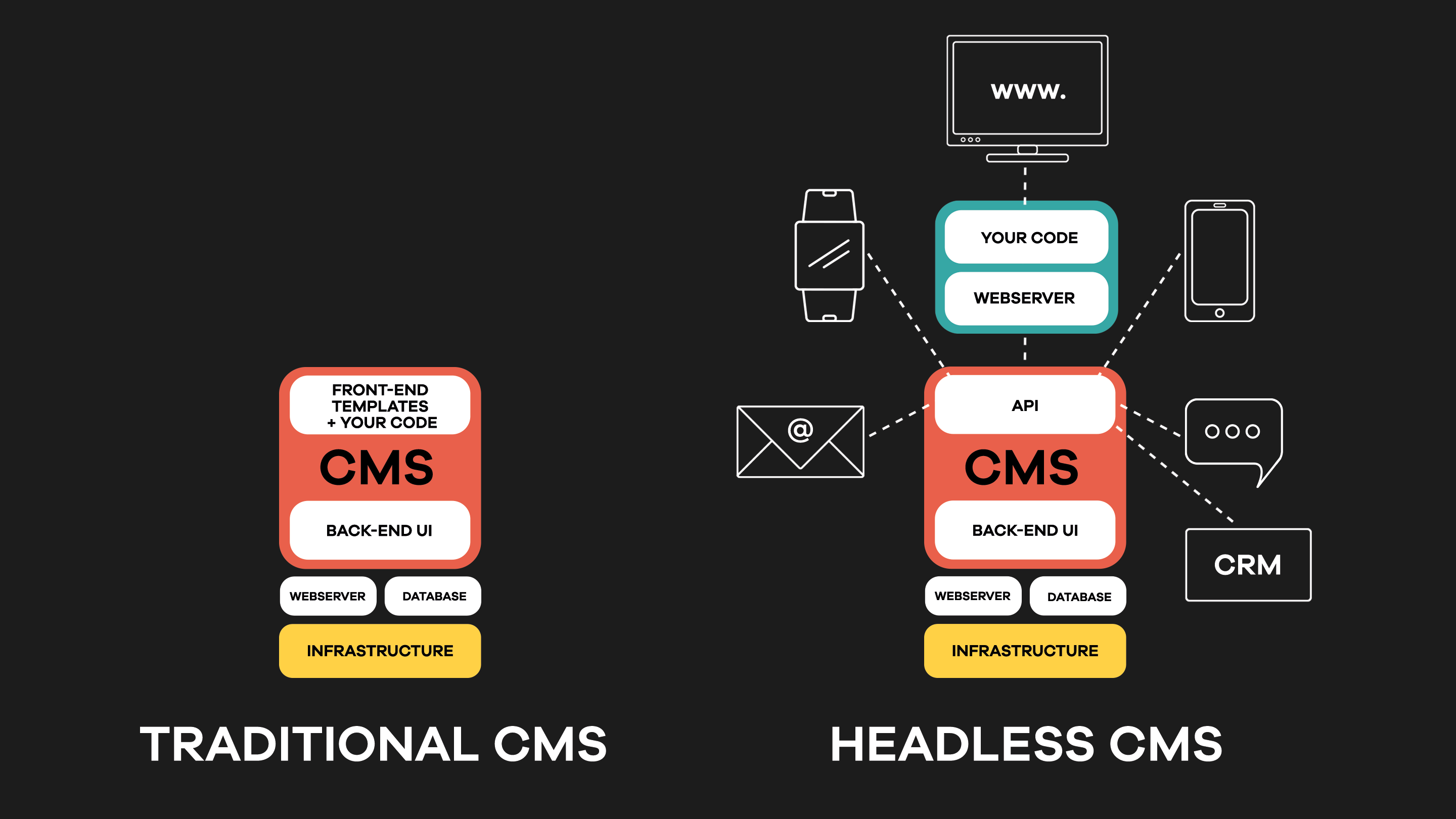How your Digital Ecosystem could benefit From using Headless CMS
Whilst traditional CMS systems have served a purpose in allowing users to simply update content on their websites, companies are now looking for increased flexibility and scalability across their whole digital ecosystems, and the various channels within these.
Traditional (Coupled) CMS Systems
Since the very early days of website development, CMS platforms have been widely used to give users the ability to easily update content, images and videos on their websites, no matter their level of technical knowledge.
These CMS systems conventionally combine the content (back-end) and presentation (front-end) layers of the application in one package with HTML, CSS, JavaScript, content, media and everything else in between, interlocked to deliver the website experience.
As a business, if all you are looking to do is maintain this one channel then this isn’t a problem, but as your online ecosystem becomes larger and the need to distribute this content further across your network presents itself, most traditional CMS systems make this extremely difficult – usually meaning a lot of time (and money) is spent on customisations, hotfixes, and custom development.
What is a Headless CMS?
A headless CMS is a system where the application content layers (the body), and the presentation layers (the head) are completely decoupled from one-another. It focuses entirely on an admin interface created for content population, storing this in pure format and providing access to it for other services via API.

Why is this needed?
This concept is born from the demands of modern digital communication, and the need to engage customers, often with personalised, localised content, through multiple stages of their journey and across multiple channels (website, IoT devices, email communications, chatbots, mobile apps, digital assistants etc.). Structured content from the centralised repository (your headless CMS) can be accessed and pushed into any of these channels as needed.
The advantages of this are many, the most obvious being that with a centralised content hub, editing becomes easy – content only has to be updated in one place before it is distributed across your network, also helping to improve your brand consistency.
Other benefits include:
- Lower operating costs – as the system is typically built on a cloud model
- Encourages a more agile project workflow – content creation and development teams can work in parallel, meaning projects are finished faster and are suited to rapid development
- A more focused product – developers of headless CMS platforms aren’t trying to solve every problem for every user out of the box (like some coupled CMS systems). It has one job, and it does it well
- A combination of stateless API, headless CMS and cloud platform flexibility make the platform highly scalable
- Reducesb risk of DDOS attacks, as the content can be served on a CDN
WordPress as a Headless CMS
WordPress is the most widely used CMS around – it powers around 35% of the web. Its mass popularity is, in part, because of its versatility as a platform – it can be suitable for use by people using it as a personal blog, all the way up to large businesses using it to manage their websites.
WordPress is almost exclusively used as a ‘traditional CMS’ system, but it does have REST API built in, meaning content can be served to other systems, and when used in this way, it becomes headless.
There are many (exclusively) headless CMS platforms around, but the advantages of using WordPress are: it has been around for a while – and is well maintained, requires a very simple (and usually cheap) stack to run, has a familiar administrator interface, and if your website is already using this as a coupled CMS it can be modified without having to re-work any of your existing content.
This sounds great, I would love to know more…
If you have any questions, please get in touch and we can discuss how your business’s digital ecosystem could benefit from using a headless CMS.
What else is going on

The future of digital design
Written by Tom Street, Associate Digital Creative Director at krow
Find out more
Nearing the new normal – consumer behaviour in the post-pandemic landscape
Written by Kevin Doutzenberg, Account Manager at krow
Find out more
